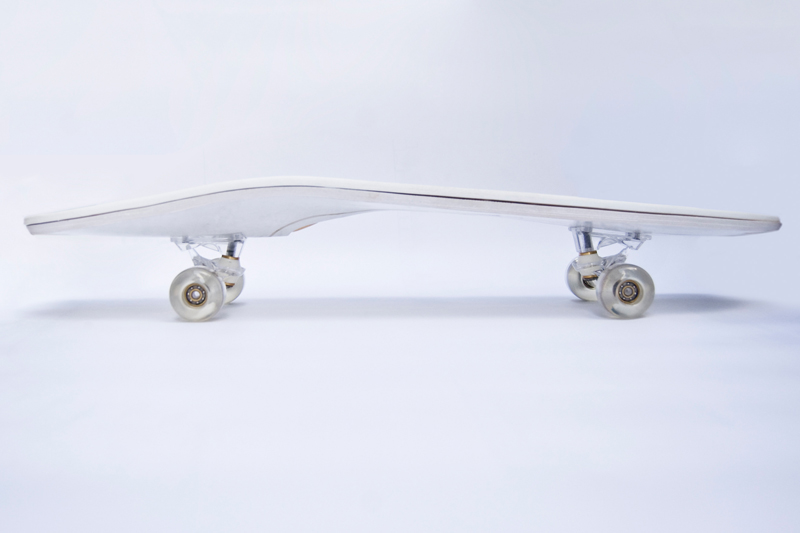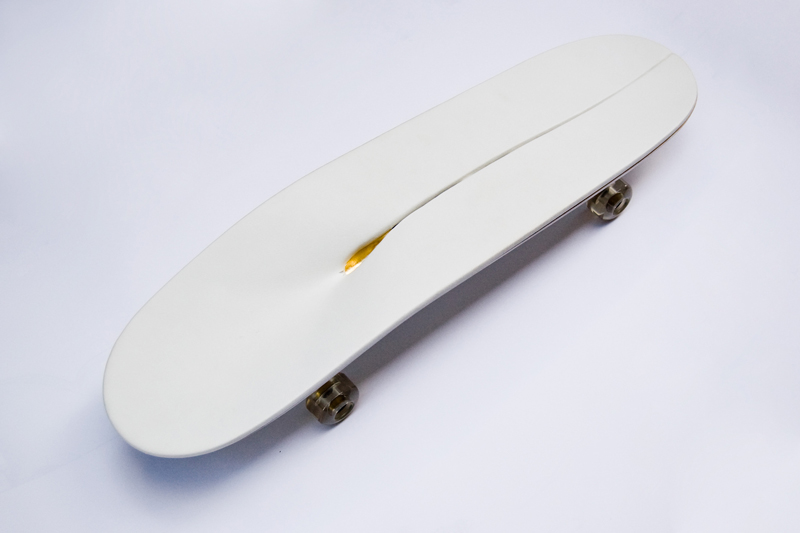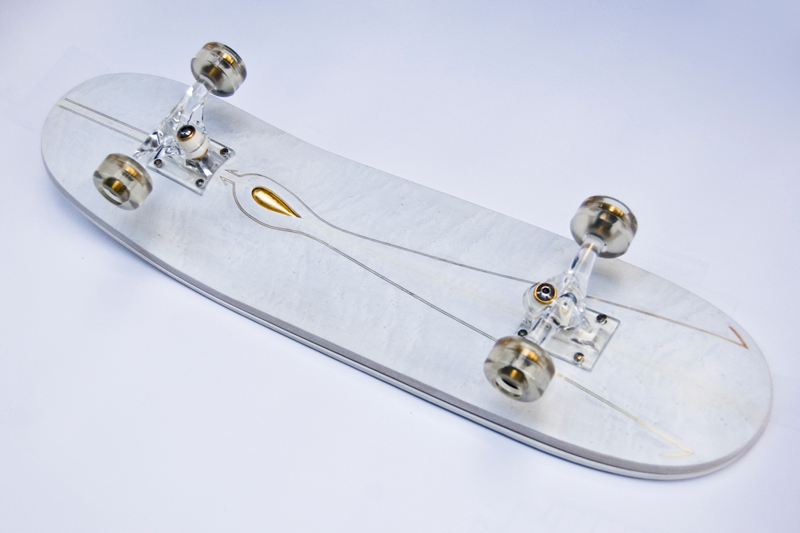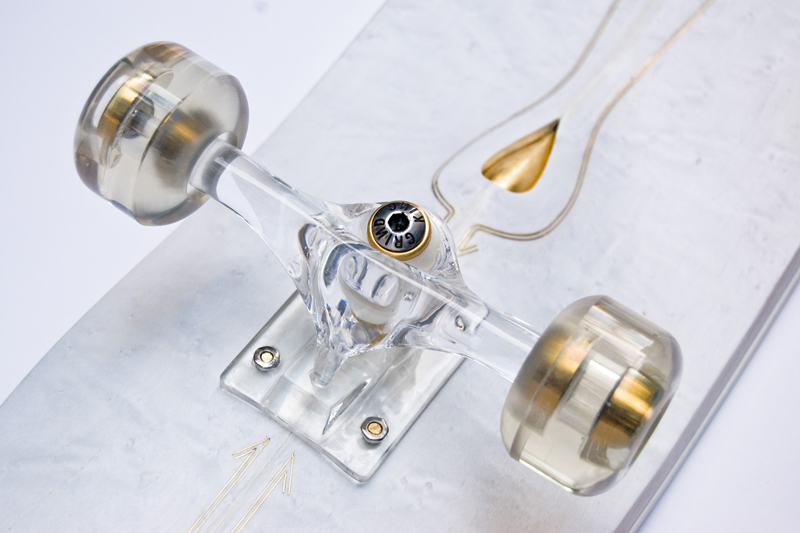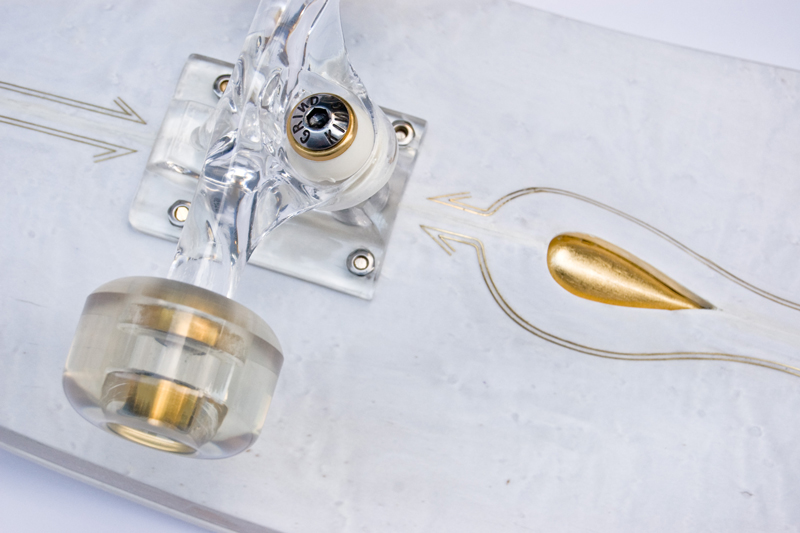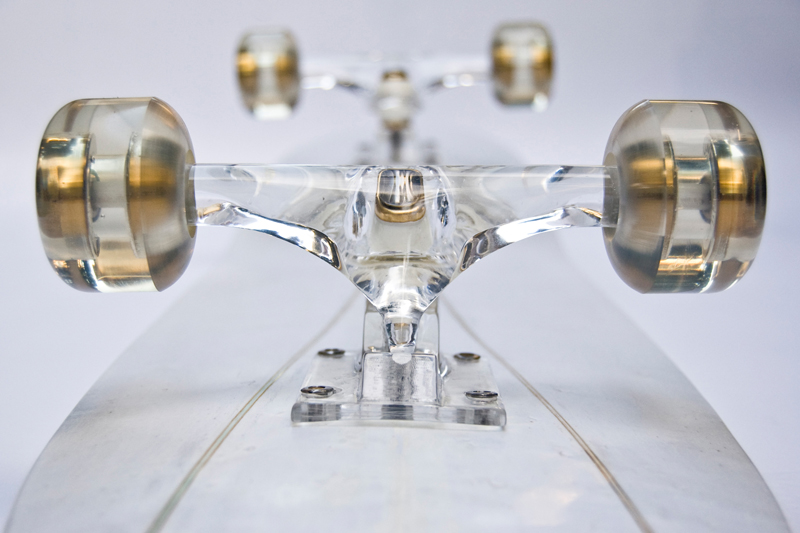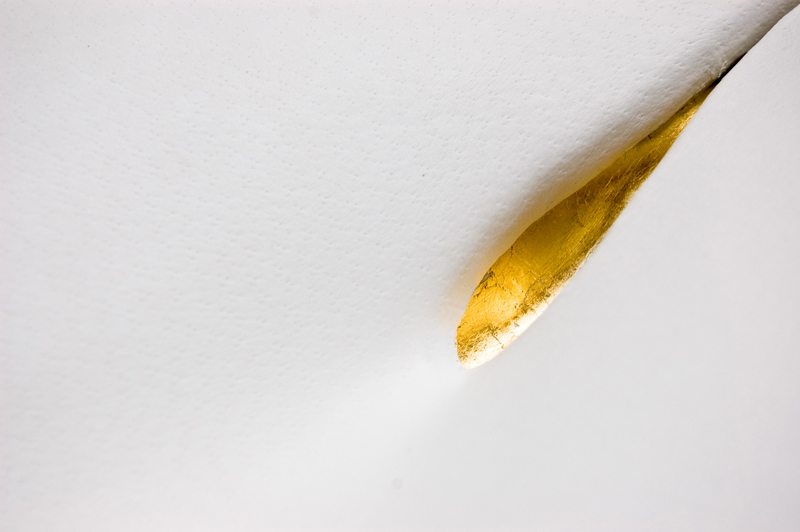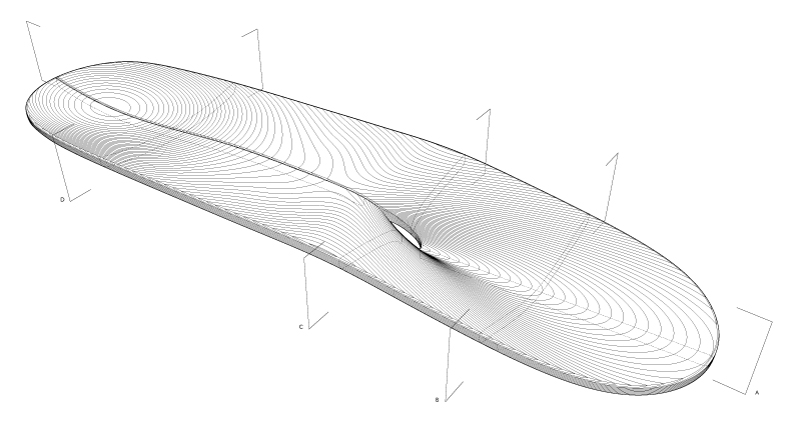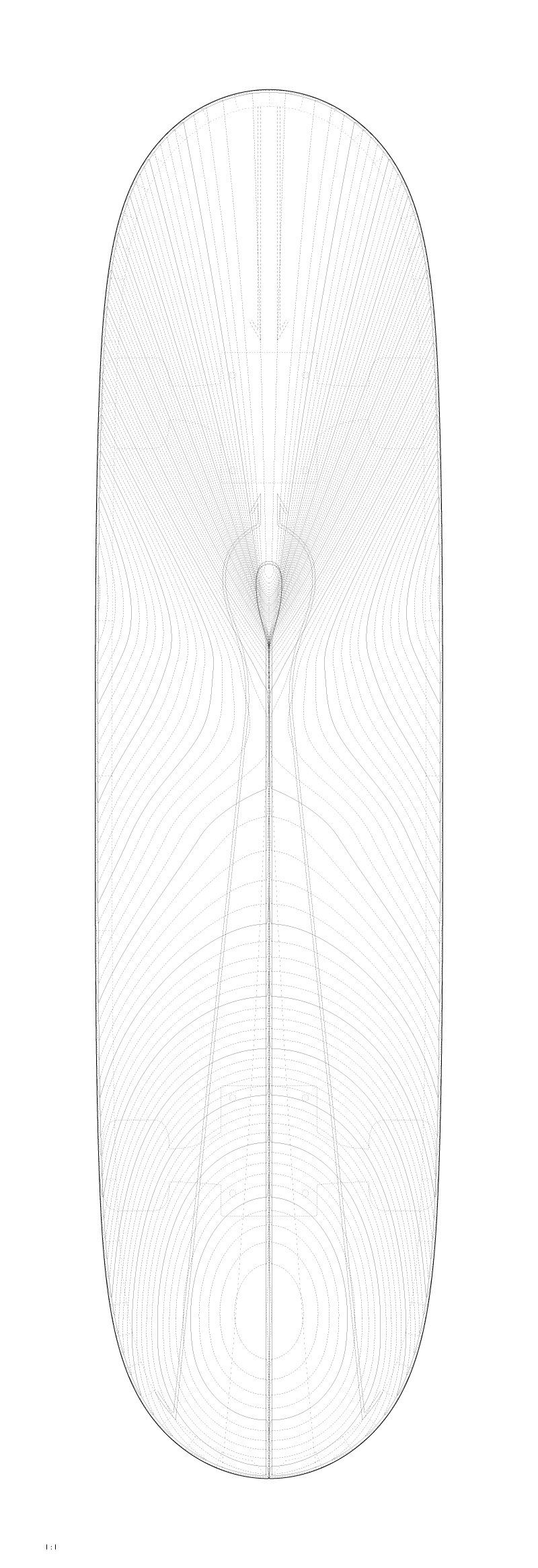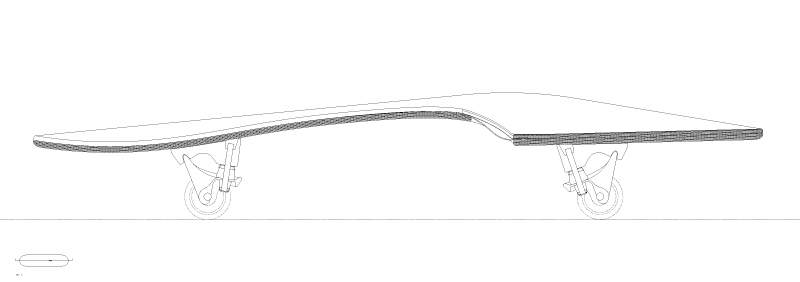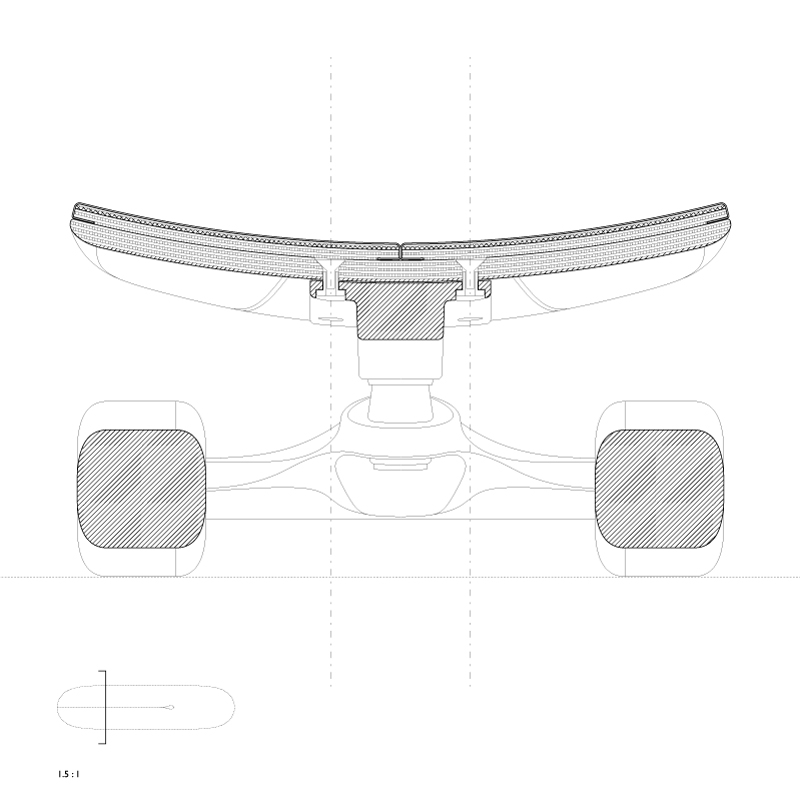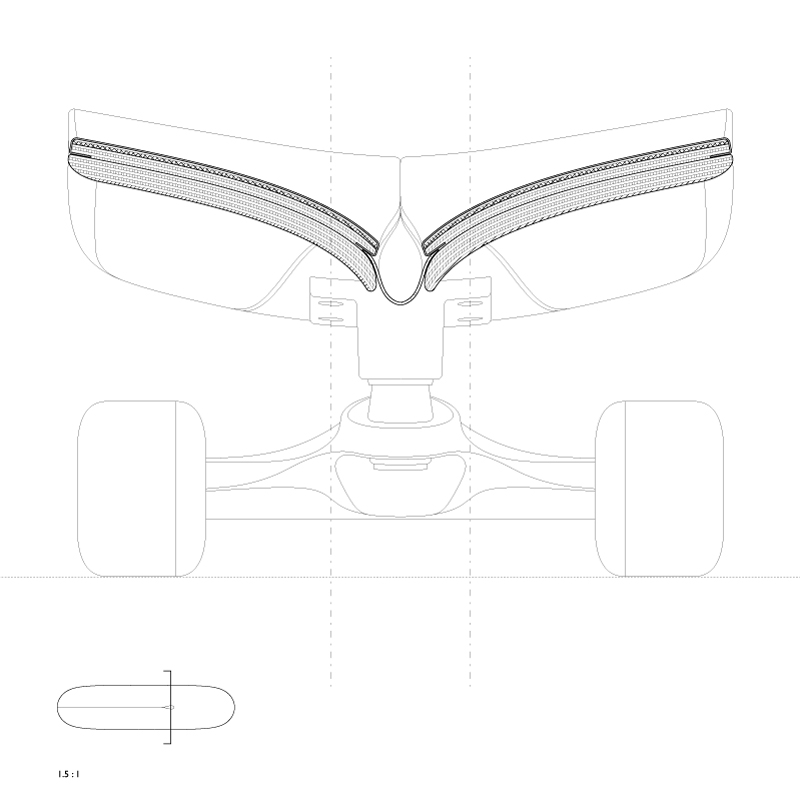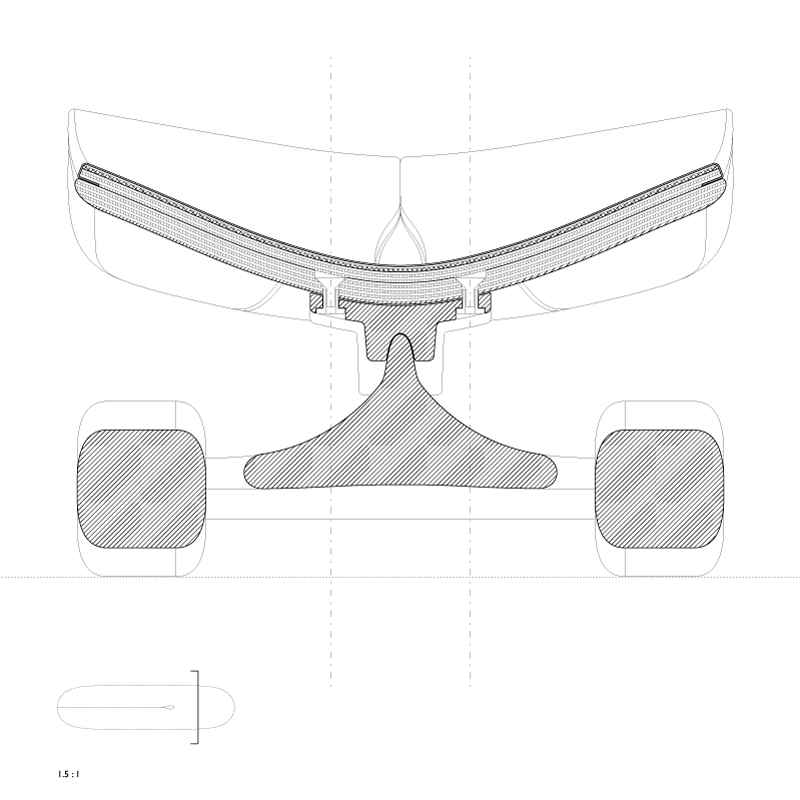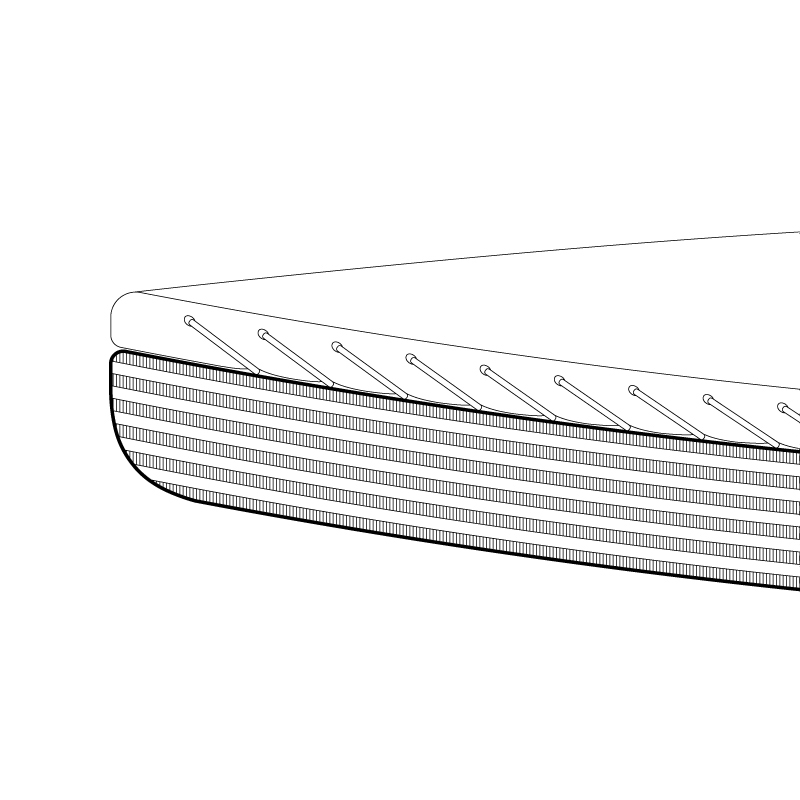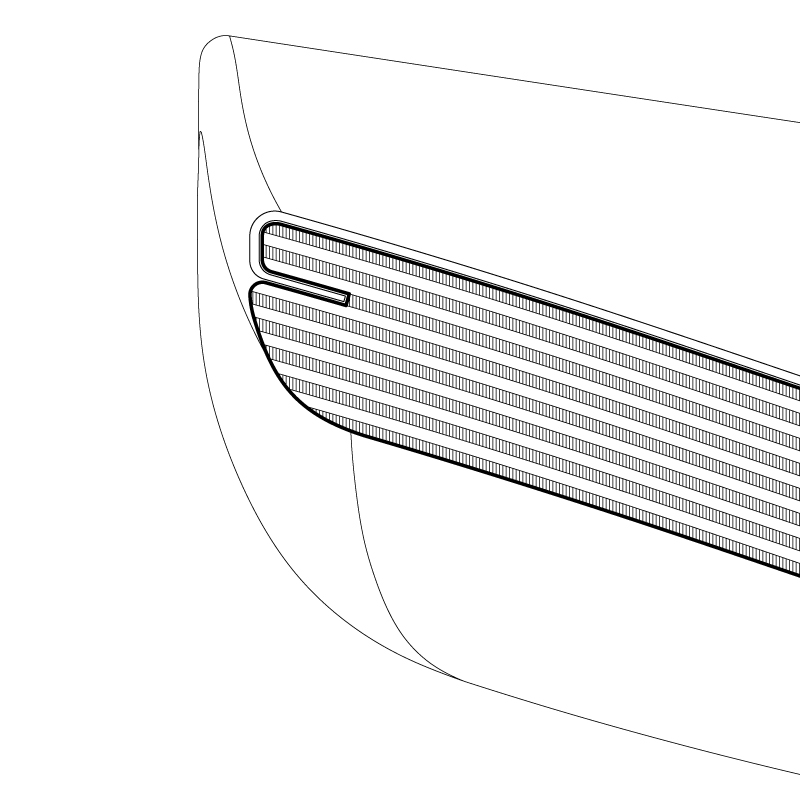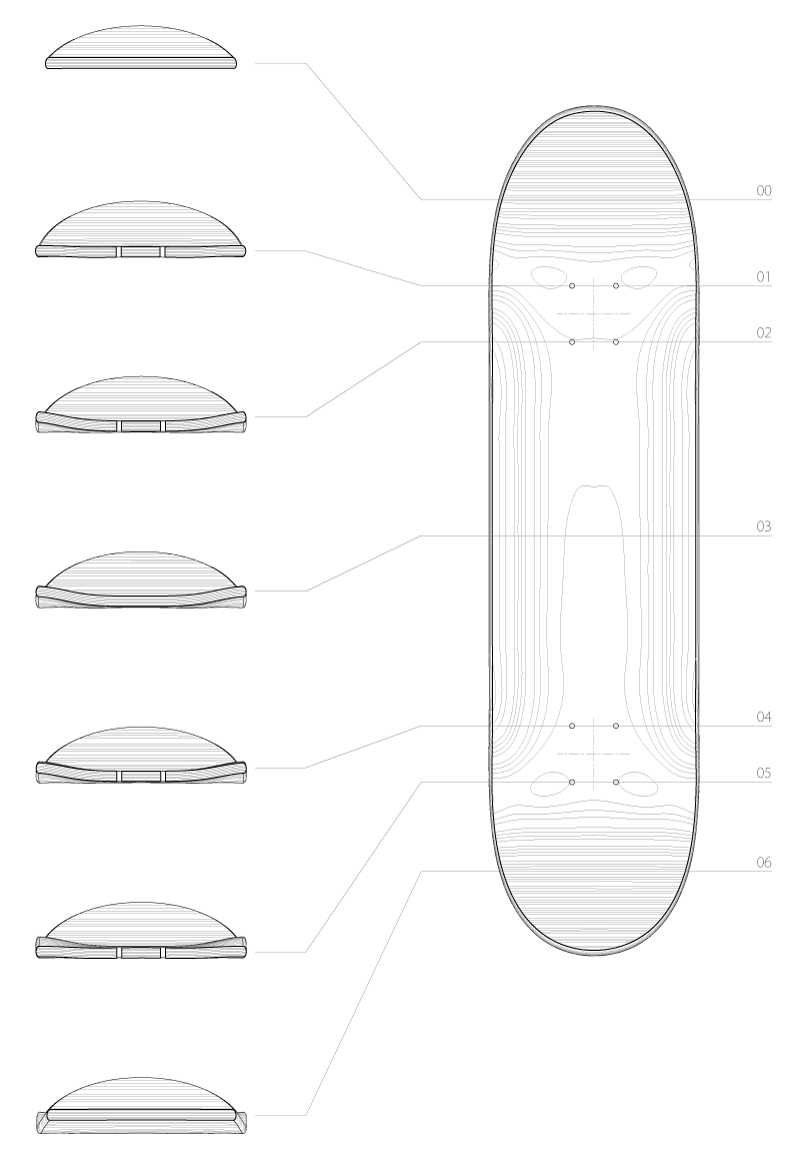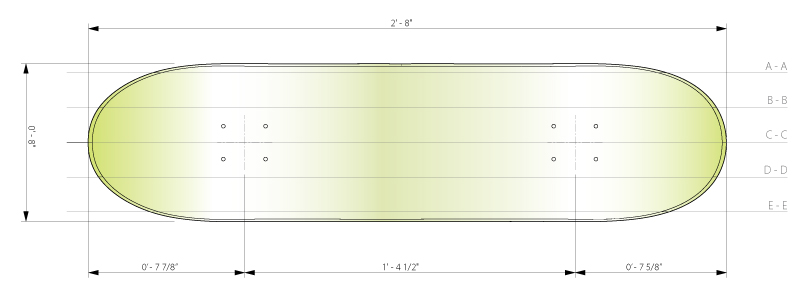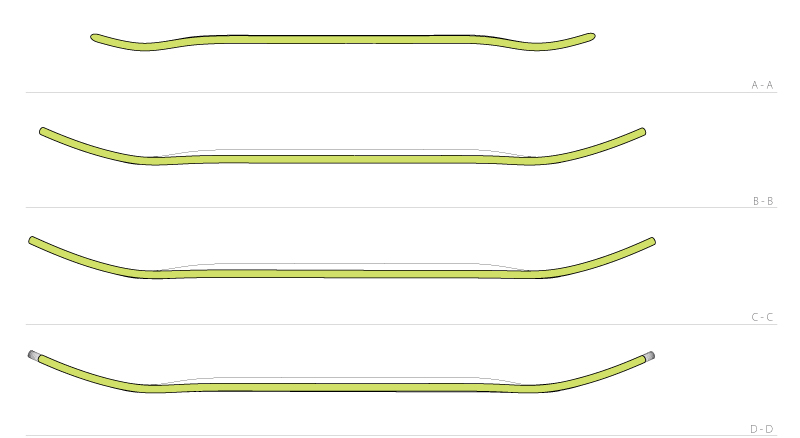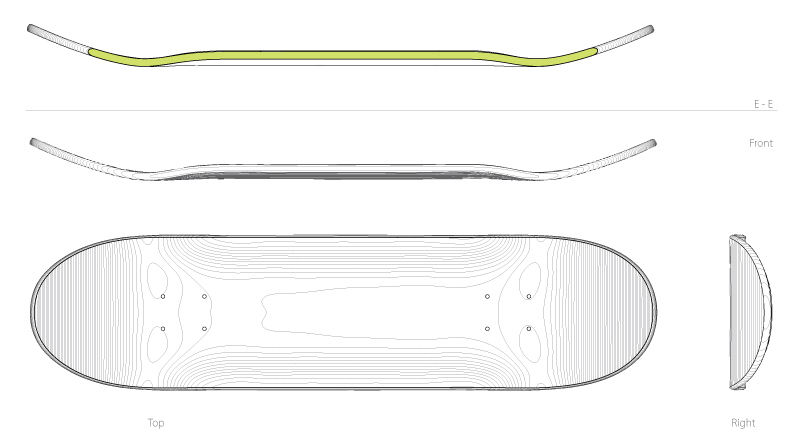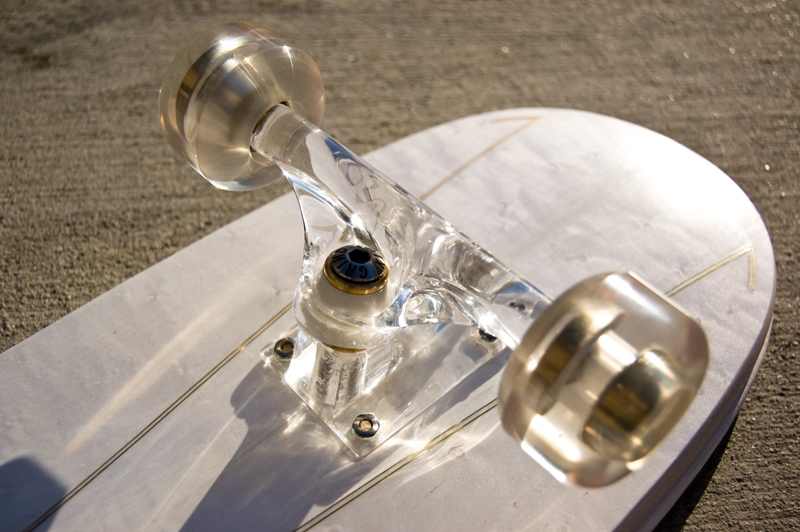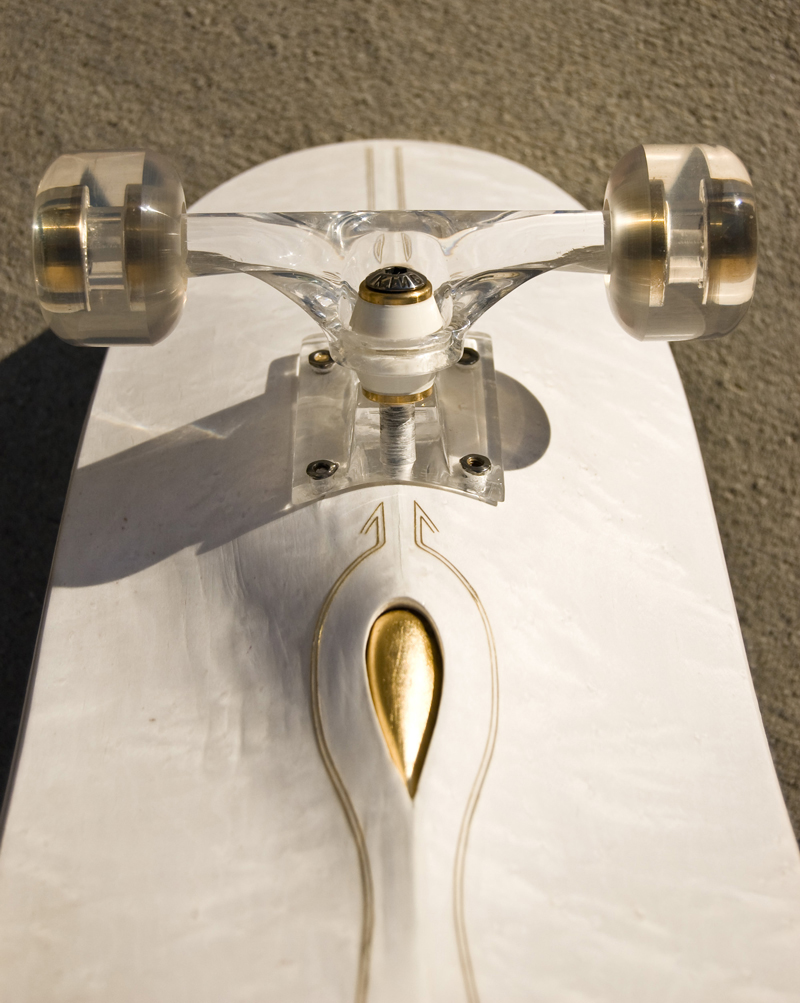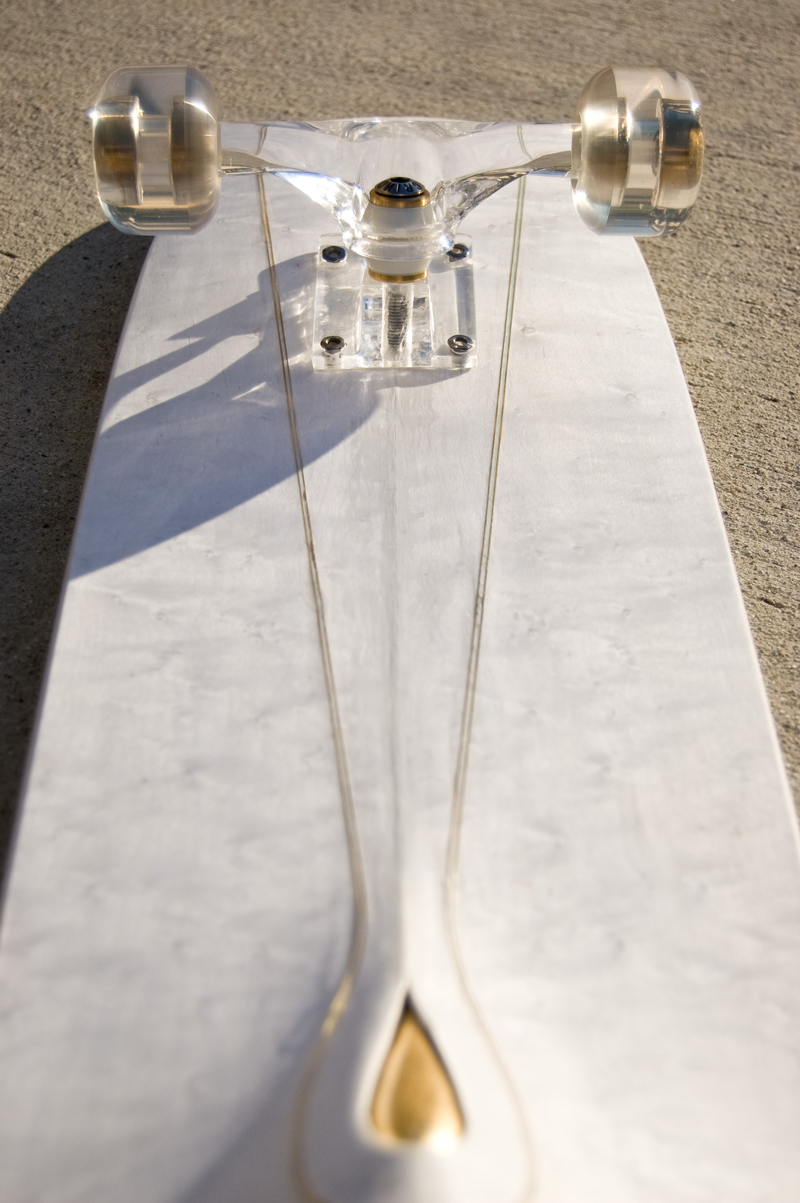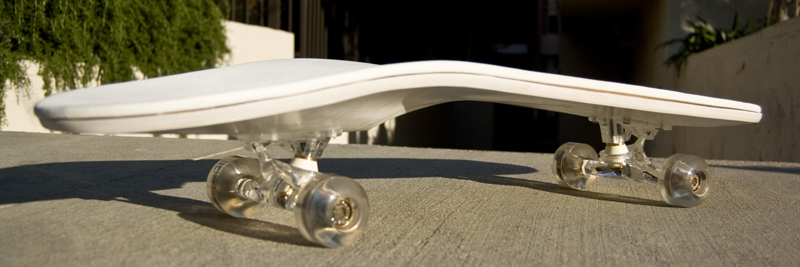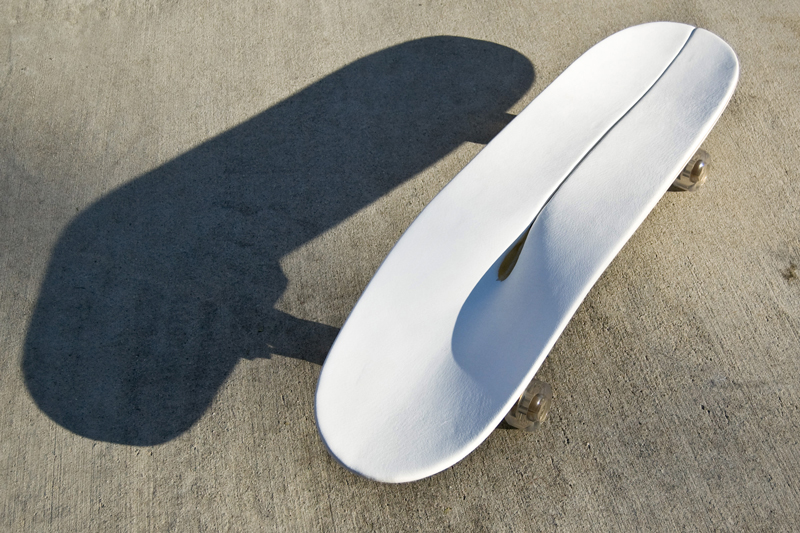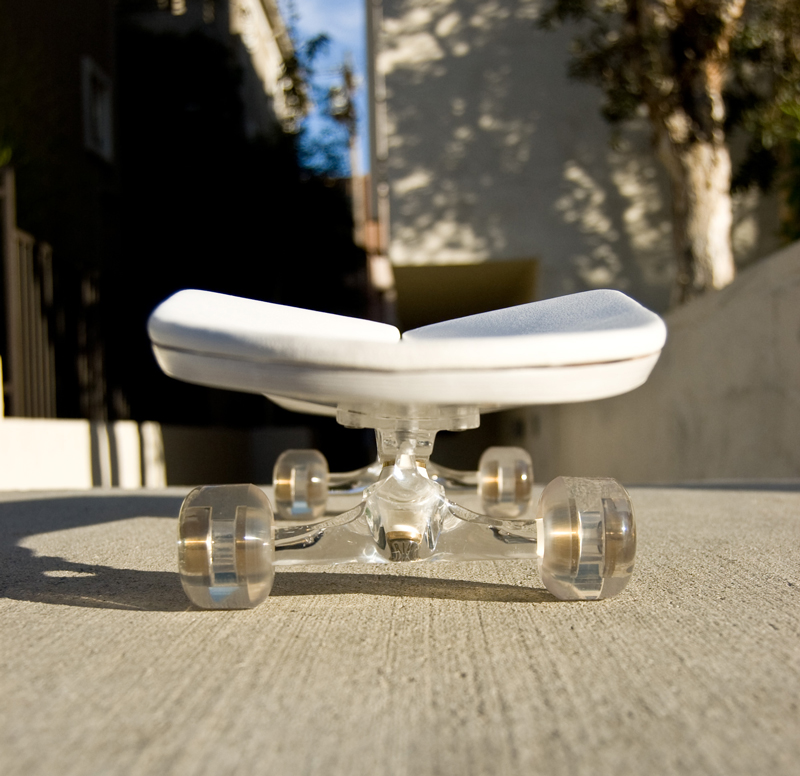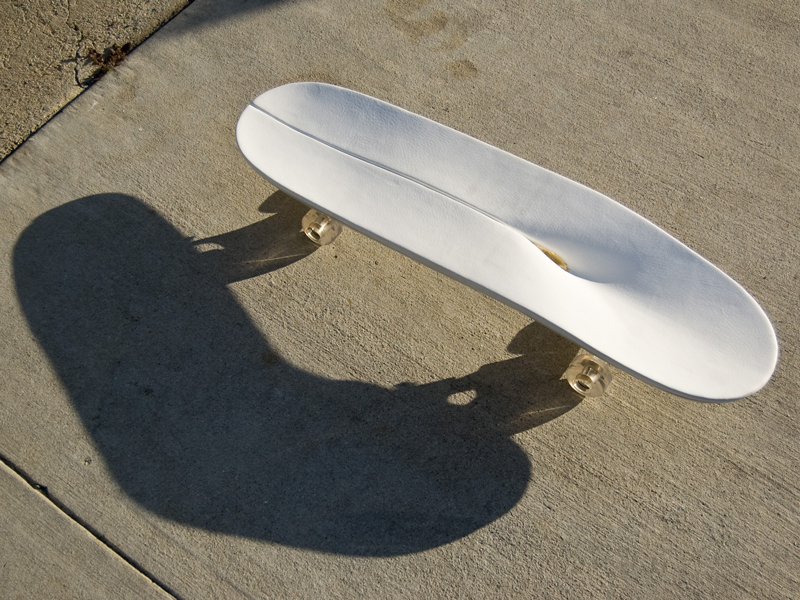White Hammer
Design Team: Michael Frederick, James Diewald, Jon Ford, Leon Cifala | Advisors: Jason Payne
Project Date: 2010
The typical skateboard or ‘trick deck’ as its colloquially referred has changed little since its development in the 1960’s and 1970’s. Boards made from laminated wood, generally maple, have oscillated in width and length with the changing fashion of the times but are generally ubiquitous objects. That is to say a skater today could perform nearly any desired series of maneuvers on a contemporary deck as well as on one constructed as much as 30 years ago. What has significantly changed throughout the skateboards history is the images and decorative details applied to the decks. This imagery tracks the history of the culture surrounding skateboarding but has always formally remained an appliqué and never become physically expressive in the shape, contours and form of the deck. In this project the planometric frame of the ubiquitous ‘trick deck’ is appropriated as a gateway, through which the legibility of the use object becomes indefinite. For this new skate deck the constituent elements (laminated wooden core, trucks, wheels, bearings, and a differentiated top surface) remain in the same hierarchy found in traditional skate decks. However the form or type of material in the traditional deck hierarchy is substituted for dyed birdseye maple, acrylic, gold leaf, brass inlay and white leather. These material shifts combined with details borrowed from upholstery and tailoring produce tension between affect and association, raising questions of identity and authenticity. The result is an object which obviously could not be called anything but a skate deck yet simultaneously is definitely not a skate deck.
